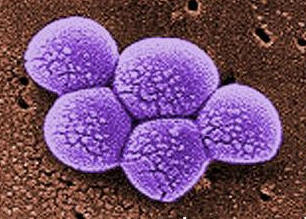|
 Kevin
Kavanagh, MD, MS
Health Policy
Biography
Health Policy CV Kevin
Kavanagh, MD, MS
Health Policy
Biography
Health Policy CV
Return To
Board of Directors Page
Dr. Kevin Kavanagh’s
academic career has spanned over 4 decades, he began as an Otolaryngologist and
finished as a patient and research integrity advocate after his surgical career
was cut short with debilitating arthritis. As an advocate he achieved national
and to some extent international recognition. He has written 68 peer-reviewed
articles, 56 of which he was the first author. He has also written book chapters
and numerous peer-reviewed letters to the editor.
During his time at the University of Tennessee, Memphis Department of
Otolaryngology he wrote two papers[1,2] which were selected by Otolaryngology,
Journal of the American Medical Association as among the most important works
for 1980[3] and 1992[4] for being the best research articles in the field. He
also published one of the first case reports on the treatment of
laryngomalacia.[5] However, his three most impactful papers were, (1) Regarding
computerized signal averaging to measure hearing loss, which was published in 1979
and the second (only by a few weeks) article to publish this technique and the
first to describe the use of bone conduction and detection of non-organic
hearing loss;[6] (2) The use of image-directed robotics for the performance of
mastoid surgery in 1994;[7] and (3) an article demonstrating the importance of
social determinates of health, finding parental education and age were
determinate factors in pediatric patient appointment compliance and concluding
that the
“importance of family centered case management in promoting the health care of
children and casts doubt on the effectiveness of interventions which are solely
centered on the patient or are designed to mitigate only one of these
factors.”[8]
During his time at the University of Tennessee he received the 1983 State
Appreciation Award for Service to Iowa Lions for development of a
statewide otologic research and diagnostic program, and a Maternal and Child
Health Grant for a tri-state pediatric speech and hearing program (MCJ-473808).
During the 1990s, Dr. Kavanagh entered into private practice where he became an
avid sailor and honed his computer skills. On July 2001, with the University of
Kentucky, he published one of the first AMA Category 1 Online Continuing
Education programs, and the first in the field of Otolaryngology (cmeusa.org). In 2005, he
received the United States Sailing Association Training Service and Support Award
for his sailing website, www.sailingcourse.com. This website was listed by the
USCG as a recommended boating safety site. Dr. Kavanagh served on the U.S.
Sailing Training Committee and on the U.S. Sailing National Faculty from 2002 to
2010.
In 2010, Dr. Kavanagh retired from medical practice due to long-standing severe
debilitating arthritis which was treated with multiple operations and
the placement of Bone Morphogenic Protein in his neck which caused long-term
symptoms. Because of this experience, along with his belief in the desperate
need for improving medical care, he became an avid patient safety and healthcare
worker advocate and founded the non-profit Health Watch USAsm in Aug of 2005. Through Health
Watch USAsm a number of initiatives were undertaken.
• State reporting of infections with dangerous pathogens – Health Watch USAsm
was the
force behind the enactment of 902 KAR 2:020 regarding “reportable disease
surveillance.”[9,10]
• Medicaid should adopt the Rules of Medicare for non-payment of preventable
patient harm.[11]
•
The
anti-competitiveness of Certificate of Needs (CONs) resulting in higher prices
and lower quality of services.
• Research Integrity regarding surveillance for MRSA[12,13] and the questionable
effectiveness of chlorohexidine bathing.[14,15]
• Healthcare integration encouraged by an often hidden facility fee charge.[16]
• Malpractice Reform.[17]
• The importance of nursing and nurse staffing.[18]
• The importance of patient input in the measurement and maintenance of patient
safety.[19]
Dr. Kavanagh is an Associate Editor for the Journal of Patient Safety. He has
served on the 2014, 2015, 2017 and 2018 Centers for Medicaid and Medicare
Services’(CMS) Hospital-Acquired Condition (HAC) Reduction Program Technical
Expert Panel, along with the AHRQ Standing Working Group for Quality Indicators
for 2016 to 2017. Currently, he serves on the CMS Hospital Harm Technical Expert
Panel and was a member of the National Quality Forum’s Consensus Standards
Approval Committee. He served on the AHRQ for Health Care Effectiveness and
Outcomes Research (HEOR) Study Section from 2018 to 2022.
IIn 2019, Dr. Kavanagh warned about reduced data transparency in tracking pandemic
pathogens[20] and about disparities in protecting socioeconomic disadvantaged
populations during pandemics.[21]
In 2020 when the COVID-19 pandemic hit, Dr. Kavanagh was at the forefront in
community and national education along with policy formulation. During this
time, he served as a news source and wrote over 150 articles and Op-eds in the
lay press, including the LA Times and USA Today. He has had five peer-reviewed publications
regarding the COVID-19 pandemic.
Health Watch USAsm has been one of the driving forces for clean indoor air and the
use of N95 masks.[22,23] But his major contribution being in the obtainment and
translation of vaccine durability data from Israel before the Delta Surge and the warning
of the dangers of the Delta variant on June 7, 2021.[24] Using this data, Health
Watch USAsm was one of the first to call the need for a booster in a series of
articles in Infection Control Today which had 100’s of thousands of page
views.[25-28] In addition, the organization questioned the initial advisement of
receiving a booster every 8 months when the data indicated this time period
should be 5 months. Health Watch USAsm was also one of the first to raise the
concerns of vaccine Imprinting after data for the bivalent booster was presented
at the Sept. 1, 2022 CDC ACIP meeting.[29]
Throughout the pandemic, Health Watch USAsm has been active in
combating disinformation regarding vaccines and the pandemic. This was a major
topic of the 2023 Webinar regarding Long COVID.[30]
For his efforts in protecting patient and worker safety he was awarded the
Massachusetts Nurses Association’s Advocate for Nursing Award, Oct. 2021.
References:
1. Kavanagh KT, Beardsley JV. Brain stem auditory evoked response. Ann Otol
Rhinol Laryngol Suppl. 1979 Jul-Aug;88(4 Pt 2 Suppl 58):1-28. doi:
10.1177/00034894790880s401. PMID: 114087.
2. Kavanagh KT, Hughes WT, Parham DM, Chanin LR. Fungal sinusitis in
immunocompromised children with neoplasms. Ann Otol Rhinol Laryngol. 1991
Apr;100(4 Pt 1):331-6. doi: 10.1177/000348949110000413. PMID: 2018294.
3. Bailey B, Editorial. Contempo '80: This is the decade that is.
Otolaryngology, Journal of the American Medical Association. 243:2203-2204,
1980. PMID: 7373777 (Publication No Longer Available)
4. Bailey B, Editorial. Contempo '92. Otolaryngology--Head and Neck Surgery,
Journal of the American Medical Association. 268:395-397,1992. PMID: 1613932
5.
Kavanagh KT and Babin RW. Endoscopic surgical management for laryngomalacia:
Case report and review of the literature. Annals of Otology Rhinology and
Laryngology, 96:650-653,1987.
6. Kavanagh KT, Beardsley JV. Brain stem auditory evoked response. Ann Otol
Rhinol Laryngol Suppl. 1979 Jul-Aug;88(4 Pt 2 Suppl 58):1-28. doi:
10.1177/00034894790880s401. PMID: 114087.
7. Kavanagh KT. Applications of image-directed robotics in otolaryngologic
surgery. Laryngoscope. 1994 Mar;104(3 Pt 1):283-93. doi:
10.1288/00005537-199403000-00008. PMID: 8127184.
8. Kavanagh KT, Smith TR, Golden GS, Tate NP, Hinkle WG. Multivariate analysis
of family risk factors in predicting appointment attendance in a pediatric
otology and communication clinic. J Health Soc Policy. 1991;2(3):85-102. doi:
10.1300/J045v02n03_06. PMID: 10116396.
9. 902 KAR 2:0200. Reportable Disease Surveillance. Cabinet for Health and
Family Services, Department for Public Health. State of Kentucky. Dec. 15, 2014.
https://www.healthwatchusa.org/HWUSA-Presentations-Testimony/20150113-KY-House-Senate/20141217-902KAR2_020-Revised-Comments.pdf
10. Hawpe D. (Courier Journal Editor) You should learn the ABCs of HAI and MRSA.
Courier Journal. July 26, 2009.
http://www.healthwatchusa.org/downloads/20090727-CJ-MRSA.pdf
11. Kentucky Should Award CONs so All Hospital Systems in The State Benefit, Not
Just One. Medical News - The Business of Healthcare, Louisville, KY,
March. 12, 2010
https://www.healthwatchusa.org/HWUSA-Publications/Op-Eds_HWUSA_PDF/20100312-CON-MedicalNews.pdf
12. Kavanagh KT. Control of MSSA and MRSA in the United States: protocols,
policies, risk adjustment and excuses. Antimicrob Resist Infect Control. 2019
Jun 19;8:103. doi: 10.1186/s13756-019-0550-2. PMID: 31244994; PMCID: PMC6582558.
https://www.ncbi.nlm.nih.gov/pmc/articles/PMC6582558/
13. Kavanagh KT, Calderon LE, Saman DM. Viewpoint: a response to "Screening and
isolation to control methicillin-resistant Staphylococcus aureus: sense,
nonsense, and evidence". Antimicrob Resist Infect Control. 2015 Feb 5;4:4. doi:
10.1186/s13756-015-0044-9. PMID: 25729571; PMCID: PMC4345038.
https://www.ncbi.nlm.nih.gov/pmc/articles/PMC4345038/
14. Kavanagh KT, Saman DM, Yu Y. A perspective on how the United States fell
behind Northern Europe in the battle against methicillin-resistant
Staphylococcus aureus. Antimicrob Agents Chemother. 2013 Dec;57(12):5789-91.
doi: 10.1128/AAC.01839-13. Epub 2013 Oct 7. Erratum in: Antimicrob Agents
Chemother. 2016 Oct;60(10):6440. PMID: 24100502; PMCID: PMC3837914.
https://www.ncbi.nlm.nih.gov/pmc/articles/PMC3837914/
15. Kavanagh KT, Saman DM, Yu Y. Reply to "Planned analyses of the REDUCE MRSA
Trial". Antimicrob Agents Chemother. 2014;58(4):2486-7. doi:
10.1128/AAC.02821-13. PMID: 24643844; PMCID: PMC4023793.
https://www.ncbi.nlm.nih.gov/pmc/articles/PMC4023793/
16. Kavanagh K. Health care integration: will physicians lose their voice? Bull
Am Coll Surg. 2011 Jun;96(6):28-30. PMID: 22315908.
https://www.healthwatchusa.org/HWUSA-Publications/PDF-Downloads/20110601-ACS-HC-Integration-kavanagh.pdf&
17. Kavanagh KT, Calderon LE, Saman DM. The relationship between tort reform and
medical utilization. J Patient Saf. 2014 Dec;10(4):222-30. doi:
10.1097/PTS.0b013e3182a7e992. PMID: 24104483.
https://journals.lww.com/journalpatientsafety/fulltext/2014/
12000/the_relationship_between_tort_reform_and_medical.7.aspx
18. Kavanagh KT, Cimiotti JP, Abusalem S, Coty MB. Moving healthcare quality
forward with nursing-sensitive value-based purchasing. J Nurs Scholarsh. 2012
Dec;44(4):385-95. doi: 10.1111/j.1547-5069.2012.01469.x. Epub 2012 Oct 15. PMID:
23066956; PMCID: PMC3558794.
https://www.ncbi.nlm.nih.gov/pmc/articles/PMC3558794/
19. Kavanagh KT, Cormier LE. Viewpoint: Patient safety in primary care -
patients are not just a beneficiary but a critical component in its achievement.
Medicine (Baltimore). 2023 Sep 15;102(37):e35095. doi:
10.1097/MD.0000000000035095. PMID: 37713815; PMCID: PMC10508386.
https://www.ncbi.nlm.nih.gov/pmc/articles/PMC10508386/
20. Kavanagh KT. Collective ignorance and government timidity are public health
threats. Los Angeles Times. May 16, 2019.
https://www.latimes.com/opinion/op-ed/la-oe-kavanagh-epidemics-health-public-policy-20190516-story.html
21. Kavanagh KT. From plague to parrot fever, history shows inequity of medical
care. Don’t let it continue. Lexington Herald Leader. July 10, 2019.
https://www.kentucky.com/opinion/article232140957.html
22. Kavanagh, KT. Viewpoint: CDC Continues to Bumble COVID-19 Response
Infection Control Today. July 20, 2021.
https://www.infectioncontroltoday.com/view/cdc-arguably-continues-to-bumble-covid-19-response
23. Kavanagh, KT. Industry Voices—The case for hospitals to invest in cleaner
air
Fierce Healthcare. May 15, 2023.
https://www.fiercehealthcare.com/hospitals/industry-voices-case-hospitals-invest-cleaner-air
24. Kavanagh, KT. Not Quite Over Yet: COVID-19 Variants on Rise in the U.S.
Infection Control Today. June 7, 2021.
https://www.infectioncontroltoday.com/view/not-quite-over-yet-covid-19-variants-on-rise-in-the-u-s-
25. Kavanagh, KT. Latest Data Point to a Need for COVID-19 Booster Shots
Infection Control Today. July 29, 2021.
https://www.infectioncontroltoday.com/view/latest-data-point-to-a-need-for-covid-19-booster-shots
26. Kavanagh, KT. COVID-19 Booster Shots for Older Americans Might be Needed
Infection Control Today. Aug. 2, 2021.
https://www.infectioncontroltoday.com/view/covid-19-booster-shots-for-older-americans-might-be-needed
27. Kavanagh, KT. Viewpoint: Expanding Booster Shots to US Adults Needed to
Happen
InfInfection Control Today. Aug. 18, 2021.
https://www.infectioncontroltoday.com/view/viewpoint-expanding-booster-shots-to-us-adults-needed-to-happen
28. Viewpoint: On COVID Boosters, CDC Panel Must Recover Ball That FDA Panel
Fumbled. Infection Control Today. Sept. 20, 2021.
https://www.infectioncontroltoday.com/view/viewpoint-on-covid-boosters-cdc-panel-must-recover-ball-that-fda-panel-fumbled
29. Kavanagh, KT. The Autumn COVID-19 Booster Is Here: Is it Safe and Effective? Infection Control Today. Sept. 2, 2022.
https://www.infectioncontroltoday.com/view/the-autumn-covid-19-booster-is-here-is-it-safe-and-effective-
30. Long COVID's Impact on Patients, Workers & Society. Health Watch USAsm. Nov.
1, 2023.
https://www.healthconference.org
View BioSketch-NLM, Kevin T Kavanagh
View Publications, "Kevin Kavanagh Research" from NCBI
View
Publications, "Favorites" from NCBI
 The picture on the right is a photomicrograph of Methicillin-resistant Staphylococcus Aureus (MRSA). The picture on the right is a photomicrograph of Methicillin-resistant Staphylococcus Aureus (MRSA).
|